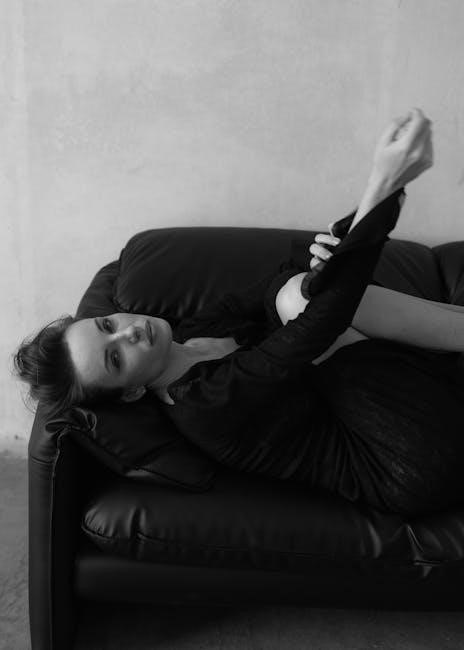Michael Bierut is a renowned graphic designer and partner at Pentagram, known for his diverse career and insightful contributions to design. His book How To offers a unique blend of career retrospective and practical design advice, showcasing his problem-solving approach and creative philosophy. Bierut’s work spans branding, typography, and visual communication, making him a pivotal figure in modern graphic design.
Overview of Michael Bierut’s Contributions to Graphic Design
Michael Bierut has significantly influenced graphic design through his versatile and innovative work. As a partner at Pentagram, he has led projects spanning branding, typography, and visual communication. His designs are known for their clarity, creativity, and ability to communicate complex ideas effectively. Bierut’s career, which includes a decade at Vignelli Associates, reflects his commitment to solving design problems with precision and originality. He has worked on iconic projects, such as the signage for Renzo Piano’s New York Times building, showcasing his ability to merge functionality with aesthetic appeal. Bierut’s contributions also extend to education and inspiration, as he shares his insights through writings and lectures, emphasizing the importance of typography and design thinking. His work continues to inspire designers globally, solidifying his reputation as a leader in the field.

Understanding the “How To” Guide by Michael Bierut

Michael Bierut’s How To serves as a career retrospective, manifesto, and design manual. It features 35 projects, showcasing his creative process and problem-solving skills, while demonstrating the transformative power of graphic design.
Key Concepts and Main Themes in the Book
Michael Bierut’s How To explores the critical role of graphic design in shaping commercial success and cultural impact. Central themes include the power of typography, the importance of brand identity, and the intersection of creativity with strategy. Bierut emphasizes problem-solving as a core design skill, illustrating how effective design communicates ideas clearly and persuasively. The book also delves into the designer’s responsibility to balance aesthetics with functionality, ensuring designs resonate with diverse audiences. By sharing real-world examples and practical advice, Bierut demystifies the design process, offering insights into his philosophy and approach to visual communication. His work underscores the transformative potential of design in everyday life, making the book a valuable resource for both aspiring and established designers.
How the Book Serves as a Career Retrospective and Design Manual
Michael Bierut’s How To seamlessly blends a career retrospective with a practical design manual, offering readers a dual perspective on his professional journey and design principles. Through 35 diverse projects, Bierut illustrates the breadth of graphic design, from branding and typography to visual communication. Each project highlights his problem-solving approach, showcasing how he translates complex ideas into cohesive designs. The book also serves as a manifesto, outlining his philosophy on creativity, strategy, and the designer’s role in shaping culture. By pairing personal anecdotes with actionable advice, Bierut creates a comprehensive guide that inspires while educating. This unique blend of memoir and manual makes How To an indispensable resource for designers seeking both inspiration and practical insights into the field.

Practical Advice from Michael Bierut’s “How To” Guide
Bierut’s guide offers actionable tips on problem-solving, creativity, and best practices, emphasizing the importance of clarity and strategy in design while encouraging designers to embrace challenges and innovate effectively.

Graphic Design Rules and Best Practices
Michael Bierut’s “How To” guide outlines essential rules and best practices for graphic designers, emphasizing clarity, simplicity, and strategic thinking. He advocates for understanding the audience and aligning design with client goals. Bierut stresses the importance of typography, suggesting that it should enhance readability while reflecting the brand’s identity. He also highlights the need for collaboration, encouraging designers to work closely with clients to ensure effective communication. Bierut’s approach balances creativity with practicality, advising designers to avoid overcomplicating designs and focus on solving problems. His philosophy underscores the value of consistency in branding, ensuring visual coherence across all platforms. By adhering to these principles, designers can create impactful and meaningful work that resonates with audiences. Bierut’s insights serve as a foundation for both emerging and seasoned designers, offering timeless advice for navigating the evolving landscape of graphic design.
Case Studies and Real-World Applications of His Design Philosophy

Michael Bierut’s work is rich with case studies that illustrate his design philosophy in action. One notable example is his design for the signage of Renzo Piano’s New York Times building, which exemplifies his focus on clarity and functionality. Additionally, his collaborations with Yale University and other institutions demonstrate how his approach to typography and visual communication can be applied to complex branding challenges. Bierut’s book, How To, features 35 projects that showcase his problem-solving methodology, from logo design to environmental graphics. These case studies highlight his ability to balance creativity with strategic thinking, ensuring designs are both aesthetically pleasing and effective. By sharing these real-world applications, Bierut provides practical lessons for designers, emphasizing the importance of understanding context and audience. His work serves as a testament to the power of graphic design in shaping experiences and communicating ideas.

Michael Bierut’s Approach to Brand Identity and Visual Communication
Michael Bierut’s approach to brand identity and visual communication emphasizes problem-solving and strategic design. His work balances creativity with functionality, creating memorable brand identities through typography and clear visual narratives.
The Role of Typography in His Design Process
Typography plays a central role in Michael Bierut’s design process, as he believes it is essential for clear and effective communication. Bierut, who studied graphic design at the University of Cincinnati and later worked under Massimo Vignelli, has always emphasized the importance of readability and legibility. His work often features bold, straightforward typography that aligns with the message he aims to convey. For instance, in his designs for Yale School of Architecture, Bierut used typography to create a sense of order and clarity, reflecting the academic and professional nature of the institution. He also discusses the challenges of balancing aesthetic appeal with functionality, as seen in his efforts to simplify complex color combinations. Bierut’s approach to typography is both practical and creative, ensuring that it serves as a powerful tool in his broader design philosophy.

